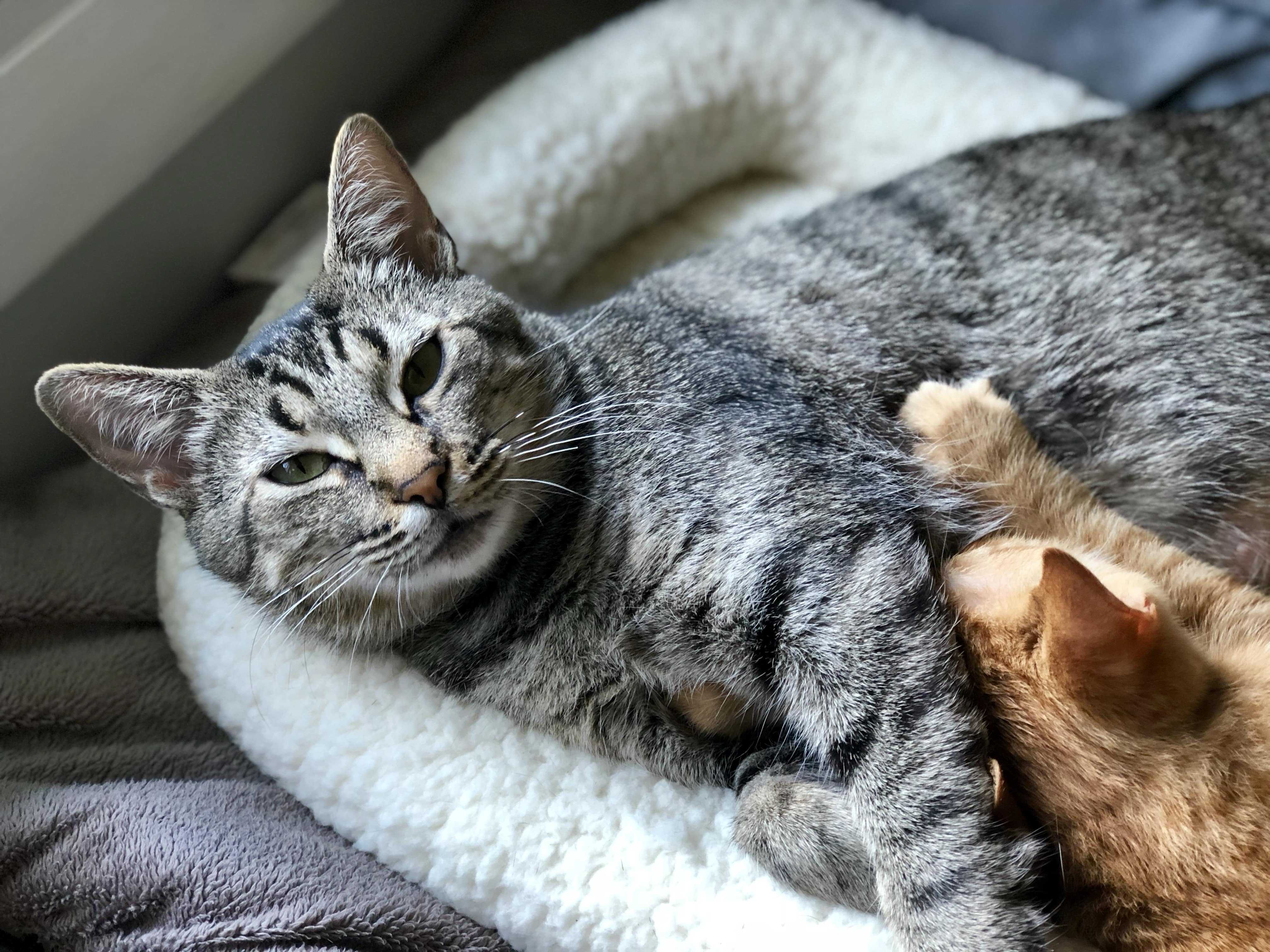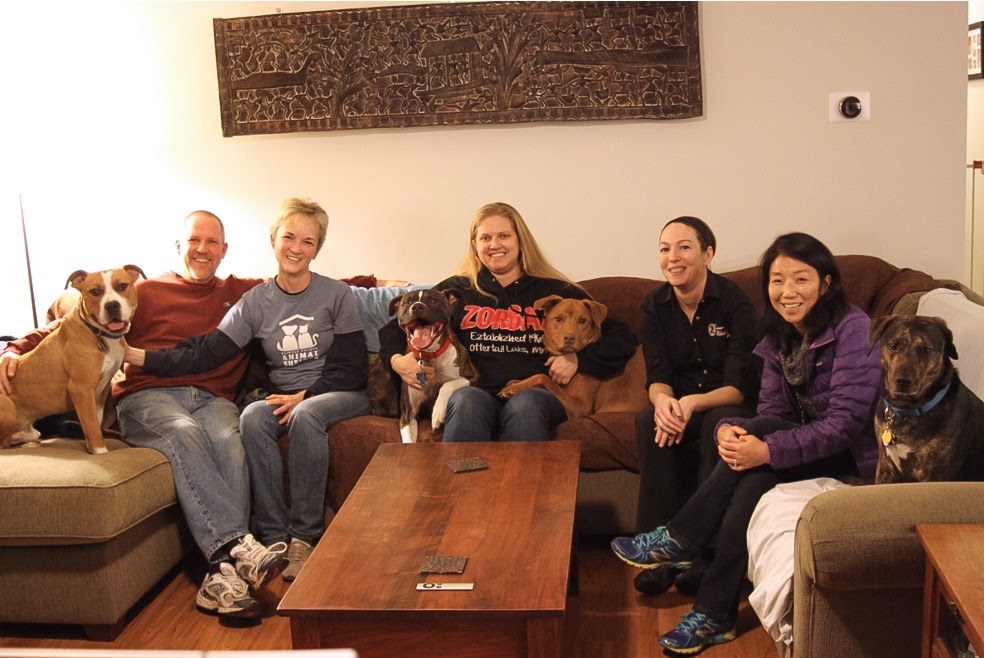As much of the country is making plans to reopen, you may be wondering if it’s possible to fit fostering into your daily life. Your schedule may not be as flexible as it’s been during the last few months. You may have slightly less free time. Caring for foster pets while you were home all day was a breeze, but can you give a foster pet what they need if you’re working 8+ hours a day?
Rest assured that you can still do satisfying, lifesaving work as a foster caregiver while working full-time, outside of your home! The majority of foster caregivers (and many pet owners!) do have full-time jobs. In fact, most shelters and rescues would be thrilled to have your help.
You might not have realized it, but your actions, together with those of thousands of new pet foster caregivers all over the country, are fueling a lifesaving revolution. Over the last century or so, we’ve realized that institutions like orphanages and hospitals just don’t work for humans, and we’ve turned away from this model in favor of home-based, patient-centered solutions. Many of us have hoped to see a parallel shift in animal services, where most pets are housed in homes and communities, not in the shelter. Right now, this seems not only possible, but within our grasp.

When the pandemic began, we saw an unprecedented surge in community support for foster care at shelters and rescues across the nation. A veritable army of foster caregivers materialized, signing up to foster in record numbers. In short order, many shelters across the nation were completely emptied. Suddenly there’s reason to hope that we can transform the entire sheltering industry as well.
Now that we’ve seen what’s possible, we know we can make long-term changes in how we care for homeless pets. To do it, shelters and rescues need your continued support as a foster caregiver. We hope you’ll consider these 10 reasons to continue fostering a pet:
What do 2 am kitten feedings, helping a fearful dog come out of her shell and caring for a pet healing from major surgery have in common? They are all totally badass. Foster caregivers open their hearts in their homes, offering a comfortable, low-stress place for pets to grow and heal. We think that’s the most badass thing someone can do!
You can be the reason animal shelters stay empty, helping to create space in the shelter for those who need medical treatment or rehabilitation to prepare them for life in a home.
This system won’t change overnight. Many animal shelters are starting to refill with pets in need, and you have the power to save their lives. Get out there and continue to support your city shelter by fostering.
In these times, we could all use the boost that being with a pet can give our immune systems. Interacting with pets has also been shown to lower blood pressure and cholesterol.

There’s little that can build a bond between friends as strong as saving animals’ lives together; having one another to lean on while fostering can make the experience even more rewarding.
At many shelters and rescues, the length of time a caregiver can foster a pet can range anywhere from a few hours to several months or more. It’s never been so easy and so flexible to become a foster caregiver as it is today.
Fact: it is scientifically impossible to be bored with a litter of kittens in the house. And if you’re looking for HOURS of entertainment? Try getting some slow-motion video of that derpy, jowly foster dog catching (or not catching!) treats in midair.
If you’ve lost someone close or are coping with anxiety or trauma, spending time with a cat or dog is good for the soul. There’s research behind this too: studies have shown that having a pet can reduce depression and feelings of loneliness while improving our moods.

Even the best shelters are stressful for cats and dogs. This stress can trigger behaviors that put them at risk. Foster care negates this stress. Think you don’t have time for a foster pet? Even if a pet is crated while you’re at work, it’s still less stressful for them than being in a shelter kennel.
Whether that family is yours or someone else’s, knowing the pet whose life you’ve nurtured is going to a loving home is a feeling that cannot be beaten. Even better: getting updates about them as they settle into their new homes!

This is not by any means an exhaustive list. There are many more great reasons to be a foster caregiver, including giving your own active dog a temporary playmate, providing your teen with an endless supply of fodder for Snapchat and having the ability to match friends and family members with pets that are a perfect fit (My personal favorite is reason # 1,263: it could turn into a springboard for a brand new, incredibly fulfilling career path!).
So, what if the energetic, young pup that you’re currently fostering really does require more care than you can provide given your schedule? All hope is not lost! Your shelter or rescue will be happy to find another pet who is a better fit for your lifestyle (perhaps a senior dog, or a cat). If you find that you absolutely cannot foster a pet, your shelter or rescue can almost certainly use your help in another way such as doing administrative tasks remotely, creating “go packs” for fosters, or doing a donation drive for the most-needed foster supplies.
Whether you’ve helped recently by fostering a pet, volunteering for a shelter or rescue or donating supplies or funds towards pets’ care, please know that you have made an incredible impact, not only on the lives of homeless dogs and cats, but on the shelter staff and volunteers who care for them. What you’ve done has given us hope for a better future for homeless pets. For this we cannot thank you enough.
Kelly Duer is a Foster Care Specialist with Maddie's Fund® and her focus is on helping shelters and rescue organizations increase lifesaving through the implementation of robust foster care programs. Her role includes consulting with shelters, creating and providing training for organizations and their foster coordinators, writing and assisting with research on foster care. #ThankstoMaddie
Kasey Spain is the Marketing & Communications Senior Manager with American Pets Alive!